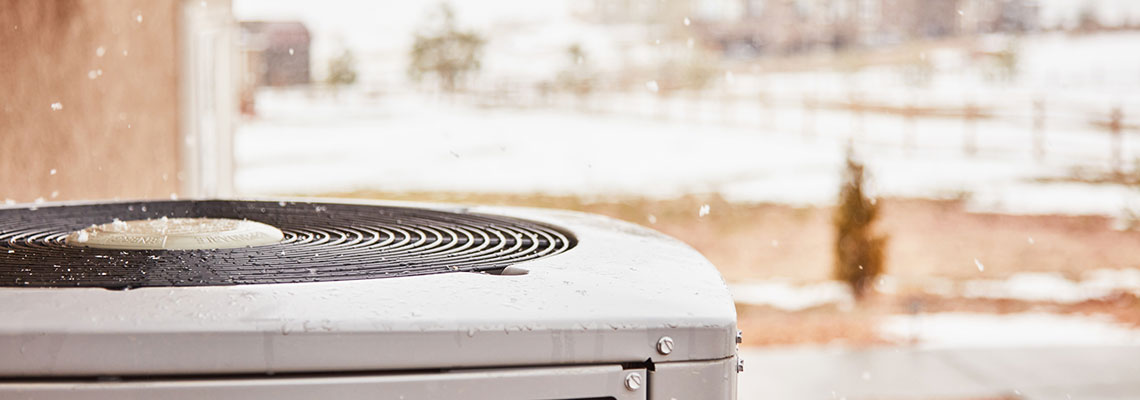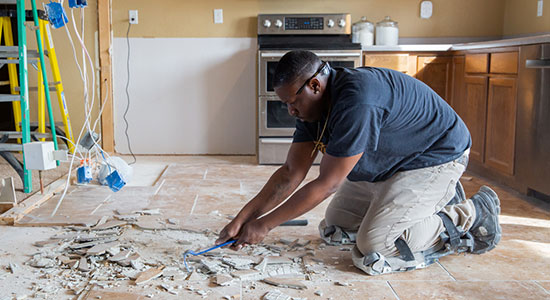
When you think of winter, you might envision cozy nights by the fire, indulging in comfort food and avoiding new projects as you embrace your version of "hibernation" while waiting for warmer days to return. Yet, this time of year also means your home will be at its peak energy use while working to keep your house comfortable for you and your family, resulting in higher utility bills.
With that in mind, there are several compelling reasons to consider select renovations or upgrades that could save you money while making your home more comfortable. For example, it’s typically the off-season for contractors, so they may have more availability and/or lower labor costs. Building materials could be discounted due to reduced demand, and home appliances are often on sale as stores clear out old inventory to make way for new models.
Plus, whether you’re investing in more insulation, a new heating system or simply installing a smart thermostat, you’ll likely see a drop in your utility expenses each month, which can really add up over time.
Concerned you don’t have the money to pay for these winter home upgrades? You might have more than you think in your home’s equity, and you can access that money through a cash-out refinance or HELOC. We’ll tell you how! But first, what are some home upgrades worth tackling this winter?
1. New attic insulation
Insulation is essential for saving money on energy and maintaining a comfortable environment in your home. If your attic isn’t well-insulated, your home can lose warm or cold air through the roof, making it less energy-efficient and resulting in higher energy and electricity costs. To prevent this loss, investing in new or additional insulation is a great place to start. New insulation can set you back around $1,200 to $3,000 installed, but it could save you thousands in the long run.
Note that there are two common types of insulation: fiberglass and cellulose. Fiberglass insulation comes in batts that are easy to install and relatively inexpensive, while cellulose is made of recycled paper, which may be costlier but is more efficient.
2. Upgrade to an energy-efficient HVAC system
Heating and cooling systems that are at least 15 years old are some of the biggest energy wasters in any home. This is a big deal, since they account for about 46% of your home’s overall energy usage. As your heat pump or furnace wears out over time, its performance declines, and it becomes more susceptible to breakdowns and costly repairs.
Today’s HVAC equipment is lightyears ahead of older models in terms of efficiency and technology. Newer units use less energy to provide the same or better heating and cooling effects. They have improved hardware and controls that contribute to higher efficiency. Plus, they are required to meet more stringent energy consumption standards.
If you have an old furnace or heat pump, replacing it with an energy-efficient model could help you save money every month and be more comfortable in your home year-round, making the upfront investment well worth it over time.
3. Replace old appliances with more efficient models
Appliances account for approximately 13% of your home’s energy use. If your appliances are more than a decade old, they are likely inefficient and costing you more than they should.
If your appliances have seen better days, consider upgrading them to ENERGY STAR models designed to be significantly more energy-efficient than standard ones. This increased efficiency translates to lower utility bills and long-term cost savings. While ENERGY STAR appliances may have a slightly higher upfront cost, they can lead to substantial savings over their lifespan.
In many cases, these appliances not only save energy but also perform better. For instance, energy-efficient refrigerators often maintain more consistent temperatures, reducing food spoilage, while ENERGY STAR washers can clean clothes more effectively. Some appliances, such as dishwashers, are even designed to operate more quietly, reducing noise levels in your home for a more peaceful living environment.
4. Install a new roof
A new roof is one of the most effective ways to improve your home’s energy efficiency. If your roof is old and leaky, replacing it with high-quality roofing material can help reduce your utility bills by up to 25%. For an average home, that’s $300 to $500 per year, which could add up to $10,000 in savings over 20 years. Depending on your roof type, you may be eligible for a federal tax credit as well. A new roof could also lower your home insurance premiums and increase the overall resale value of your home down the road.
5. Get a smart thermostat
Changing out your thermostat is one of the easiest ways to reduce energy costs and make your home more efficient. A smart thermostat could save you up to 20% on your energy bill compared to an old-fashioned thermostat.
How does a smart thermostat help lower your energy bill? It can ensure your HVAC system doesn't run unnecessarily. A thermostat with a built-in motion sensor can turn off automatically when no one is home or when rooms aren’t in use. Similarly, a thermostat with a built-in humidity sensor can adjust the heating or air conditioning when the air is too humid. Some higher-end smart thermostats even "learn" your schedule over time and create heating or cooling schedules to maximize efficiency without sacrificing comfort.
Financing your home upgrades
If you’re wondering how to pay for these upgrades, we have some answers. Homeowners with equity in their homes can use it as a source of cash to finance renovations that add value and comfort.
You can access your property's equity through either a home equity line of credit (HELOC) or a cash-out refinance. Here are some considerations when deciding between these two home equity solutions.
What is a cash-out refinance?
A cash-out refinance is a new mortgage that replaces your current loan and gives you access to the equity you've built since you purchased your home. With the new mortgage, you borrow more than you owe and receive the difference in cash to use however you like. Using that money for home improvements can be a great investment in your home and your future.
What is a home equity line of credit (HELOC)?
A home equity line of credit, or HELOC, differs from a cash-out refinance in how the money is accessed. Instead of obtaining a new mortgage and borrowing from your equity in a lump sum, you access the money on an as-needed basis, much like a credit card. One of the benefits of a HELOC over other types of equity loans is that you only pay interest on the amount you borrow, and you can borrow the money again once you've paid back a portion of the loan.
How to decide between a cash-out refinance and HELOC
The best way to decide between a cash-out refinance and HELOC is to consider your financial goals, current situation and preferences. If you need a one-time lump sum for a specific purpose, such as financing a major expense or paying off higher-interest debt, a cash-out refinance might be the best choice. On the other hand, a HELOC offers more flexibility for ongoing or variable expenses like home renovations over time, educational expenses or emergencies, allowing you to access the funds as you need them.
Interest rates are another consideration. Since a cash-out refinance is a new mortgage, you'll receive new terms, including the interest rate. Traditional mortgages offer fixed rates, which provide a consistent payment month-to-month, making it easier to budget. HELOC rates are typically variable, fluctuating based on market conditions, which can affect your monthly payment. They may also be higher than fixed mortgage rates. This can be offset somewhat because you only pay interest on the amount you've borrowed, and some HELOCs offer interest-only payment options during the draw period.
Explore your options
Solarity Credit Union offers both cash-out refinance and HELOC options that you can consider for your energy-efficient home upgrades. One of our Home Loan Guides can help you decide which is the better choice for your financial situation and planned renovations. We know how important it is for your home to meet your needs, and we’re here to help you make it happen.
What's your Solarity story?
We're on a mission to tell the stories of our members and how they are living their best lives. Do you have a Solarity story to share?



